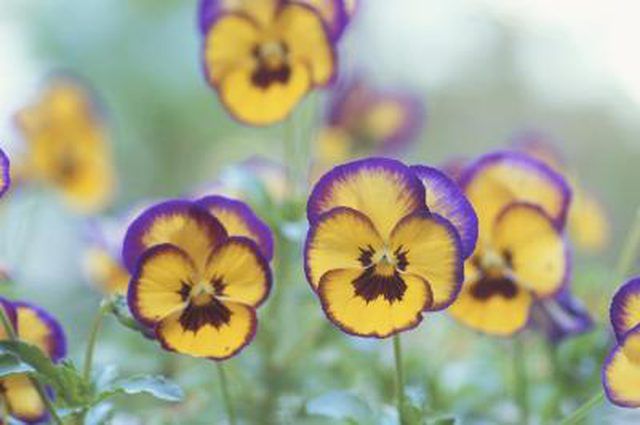Bulbs
Flower Basics
Flower Beds & Specialty Gardens
Flower Garden
Garden Furniture
Garden Gnomes
Garden Seeds
Garden Sheds
Garden Statues
Garden Tools & Supplies
Gardening Basics
Green & Organic
Groundcovers & Vines
Growing Annuals
Growing Basil
Growing Beans
Growing Berries
Growing Blueberries
Growing Cactus
Growing Corn
Growing Cotton
Growing Edibles
Growing Flowers
Growing Garlic
Growing Grapes
Growing Grass
Growing Herbs
Growing Jasmine
Growing Mint
Growing Mushrooms
Orchids
Growing Peanuts
Growing Perennials
Growing Plants
Growing Rosemary
Growing Roses
Growing Strawberries
Growing Sunflowers
Growing Thyme
Growing Tomatoes
Growing Tulips
Growing Vegetables
Herb Basics
Herb Garden
Indoor Growing
Landscaping Basics
Landscaping Patios
Landscaping Plants
Landscaping Shrubs
Landscaping Trees
Landscaping Walks & Pathways
Lawn Basics
Lawn Maintenance
Lawn Mowers
Lawn Ornaments
Lawn Planting
Lawn Tools
Outdoor Growing
Overall Landscape Planning
Pests, Weeds & Problems
Plant Basics
Rock Garden
Rose Garden
Shrubs
Soil
Specialty Gardens
Trees
Vegetable Garden
Yard Maintenance
Care of a Viola Plant
Care of a Viola Plant. Many plant species are commonly referred to as "viola," but two major kinds exist. One kind is called Johnny-jump-up (Viola tricolor) because it pops up early in spring. The other kind is horned violet (Viola cornuta). Both types have many small, delicate blossoms in shades of purple with patches of yellow and...

Many plant species are commonly referred to as "viola," but two major kinds exist. One kind is called Johnny-jump-up (Viola tricolor) because it pops up early in spring. The other kind is horned violet (Viola cornuta). Both types have many small, delicate blossoms in shades of purple with patches of yellow and white. Although often grown as annuals, Johnny-jump-up is an annual, a biennial or a short-lived perennial in U.S. Department of Agriculture plant hardiness zones 3 through 9 while horned violet is biennial or perennial in USDA zones 6 through 11. A viola thrives when given some basic care and the right environment.
Space and Sunlight
Viola is a diminutive plant, usually about 6 to 9 inches tall with an equal spread. Keep your viola about 10 inches from other plants and structures. The spacing gives the plant enough room to grow to its full size, which helps ensure good flower production. Keep its location in full sun, where the plant will thrive and have the greatest number of flowers; it can do well in partial shade as long as it gets about four to six hours of sunlight daily, but it will produce fewer flowers. If your viola has few blooms and is in shade, trim surrounding plants to increase the light it receives.
Soil and Moisture
A viola does best in organically rich, fertile soil. Increase the organic content of your viola's soil by spreading a 1- to 2-inch-thick layer of compost under the plant and scratching it into the soil; do that task gently to avoid damaging the plant's roots. Viola also requires well-drained soil and won't thrive if the soil stays soggy for long periods after rain. The plant needs an average amount of moisture for good blooming and thrives when it receives water regularly. During dry spells, provide your plant with supplemental water, aiming for about 1 inch of water weekly, including rain. Adding organic mulch on the soil surface helps conserve soil moisture and keeps down weeds, which compete for water and soil nutrients, but don't allow the mulch to touch the plant.
Food and Trims
If you grow your viola as a perennial, apply a granular, 5-10-10 fertilizer to its soil in late fall, and repeat the application in early spring, using 1/10 pound of the fertilizer for every 5 square feet of soil surface for each feeding; because the application rate for your product may vary, follow its label instructions. If you grow a viola plant as an annual, get it off to a good start by mixing a slow-release, granular, 5-5-5 fertilizer into the soil when you plant. Use about 1/8 pound of fertilizer for each 5 square feet of soil surface, but check the fertilizer's label for its specific directions.
A viola tends to bloom less in summer than in spring, but you can help prolong flowering by removing its wilted flowers, a process called deadheading. If the plant begins to look a bit leggy, or spindly, later in the season, then trimming it back may promote new, bushy growth. Use sharp shears for deadheading and trimming, cleaning its blades in rubbing alcohol before and after the tasks to prevent the spread of plant diseases.
Root Rot and Pests
A viola is usually a care-free, simple-to-grow plant. It may develop a fungal problem called root rot, however, when grown in overly wet conditions. Root rot causes yellow leaves and slow growth. Prevent it by ensuring your viola's location has good air circulation and by watering with a soaker hose to avoid wetting foliage.
Pests such as aphids and spider mites can damage a viola by feeding on the plant's sap. Spider mites are too small to see without magnification, but their webs that cover young growth can be seen without magnification. Aphids are small, soft-bodied and leave a sticky substance on leaves. Both pests can cause wilting of leaves and general die-back if not controlled. Treat both pests by spraying the viola thoroughly with insecticidal soap that has been diluted at a rate of 6 tablespoons per 1 gallon of water. Repeat the spray treatment every two weeks as needed.